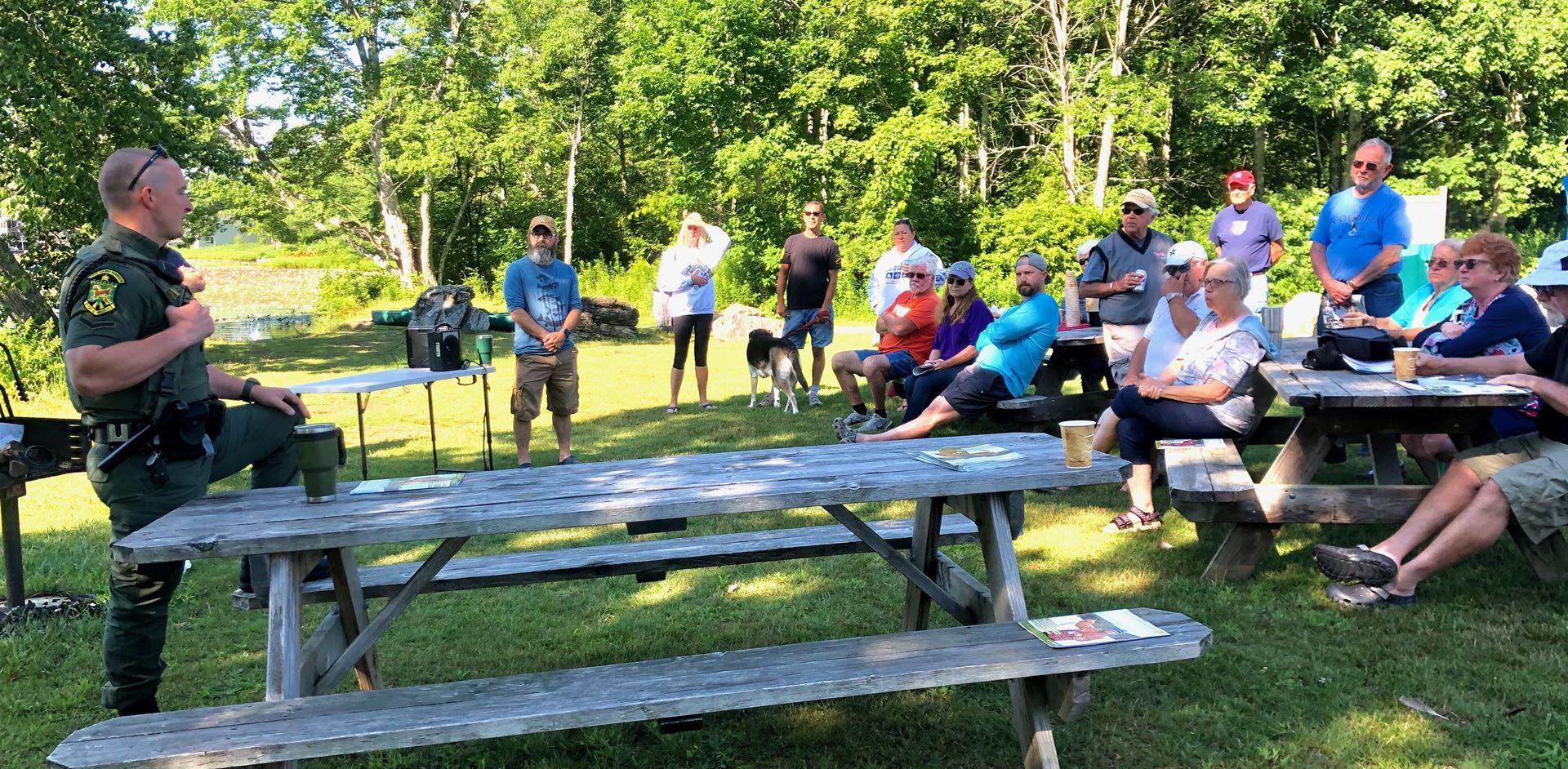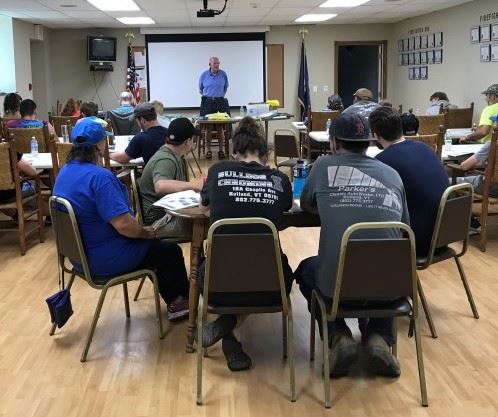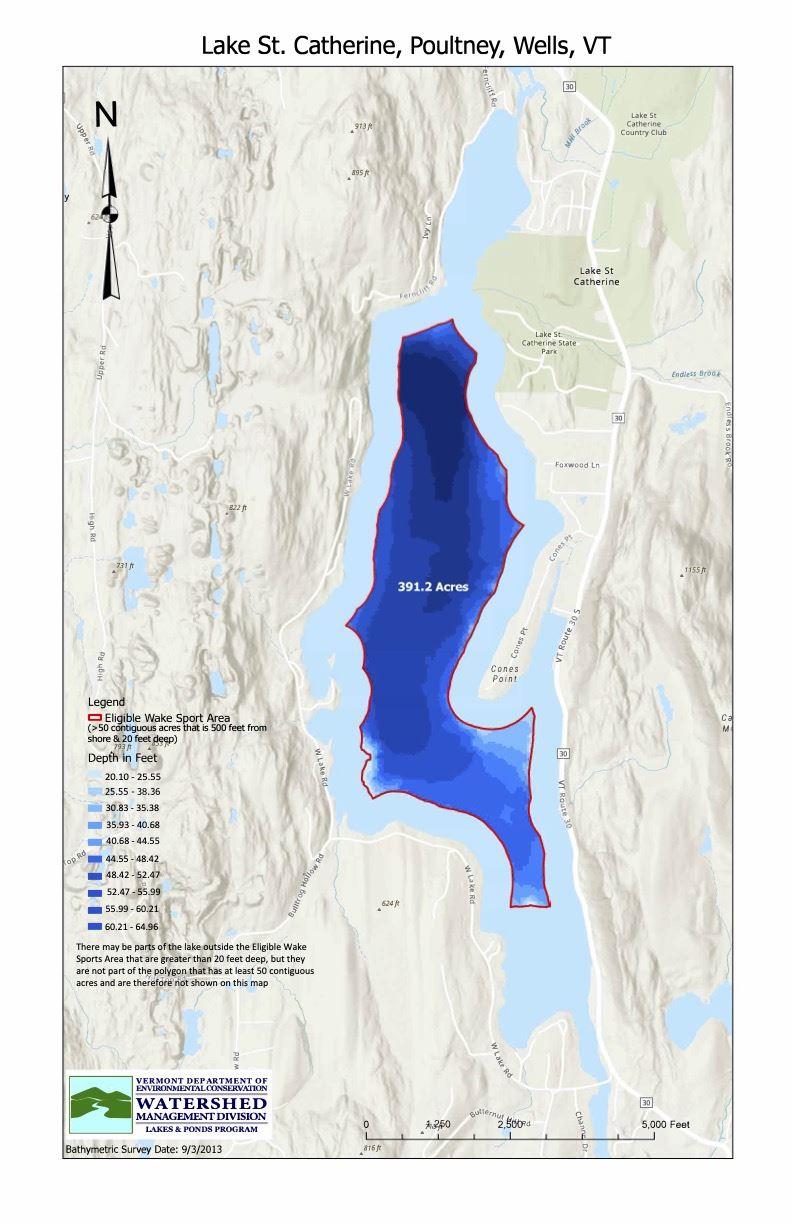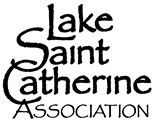For the preservation, protection, and maintenance of Lake St. Catherine |
 |
Lake Safety
The Lake St. Catherine Association is very concerned with the safety of all the people that use our lake. We try to make all people aware of the rules from the State of Vermont.
Listed below, you will find information on rules and regulations, how to contact our Game Warden to make a report, a map of the lake buoy and marker locations, and details on the LSCA's free boating safety classes.
VERMONT LAW: DANGEROUS OPERATING PRACTICES
Vermont law states that these dangerous operating practices are illegal:
Careless and Reckless Operation of a vessel or the reckless manipulation of water skis, a surfboard, or a similar device is operating in a manner that causes danger to the life, limb, or property of any person. Examples of illegal, reckless operation are:
- Boating in restricted areas without regard for other boaters or persons, posted speeds and wake restrictions, diver-down flags, etc.
- Boating while under the influence of alcohol or drugs
- Failing to follow the navigation rules
- Weaving through congested waterway traffic
- Swerving at the last possible moment in order to avoid collision
- Causing danger or damage from the wake of your vessel
- Chasing, harassing, or disturbing wildlife with your vessel
Overloading is loading the vessel beyond a safe carrying capacity, taking into consideration the weather and other operating conditions.
Improper Speed or Distance is not maintaining a proper speed or distance while operating a vessel or while towing a person on water skis or any similar device. Specifically, the following actions are illegal:
- Operating a vessel (except sailboards) at greater than “no wake speed” within 200 feet of:
- The shoreline
- A person in the water
- A canoe, rowboat, or other vessel
- An anchored or moored vessel with a person on board
- An anchorage or dock
- Operating a vessel at speeds of five miles per hour or greater within 200 feet of a marked swimming area
- Operating a vessel at speeds that may cause danger, injury, or damage. Be aware of and obey all regulatory markers, including areas marked as “no wake”
Note: “No Wake Speed” means operating your vessel at a speed at which the vessel does not produce a wake, not to exceed five miles per hour.
Many more rules and regulations for boating in Vermont can be found here, in the Vermont Boating Laws And Responsibilities Handbook.
LAKE ST. CATHERINE SPECIFIC BOATING RULES
Under Vermont Statute 10 V.S.A. § 1424, (effective November 17, 1980, amended January 1, 1995)
Water-skiing is prohibited in the following waters:
- All portions of Lily Pond and the channel connecting Lily Pond and Lake St. Catherine
- All portions of the channel connecting Little Lake and Lake St. Catherine
The operation of vessels powered by motor at speeds exceeding five miles per hour or in such a manner as to cause a disturbing wake is prohibited in the following waters:
- All portions of Lily Pond and the channel connecting Lily Pond and Lake St. Catherine
- All portions of the channel connecting Little Lake and Lake St. Catherine
- Forest House Bay - defined for purposes of this rule as those waters south and southwest of a straight line between the southerly corner of Camp 102 and the northeasterly corner of Camp 110A
- Hall’s Bay - defined for purposes of this rule as those waters north and northeast of a straight line between the southerly corner of Camp 224 and the northerly corner of Camp 207
- Horseshoe Bay - defined for purposes of this rule as those waters west of a straight line between the easterly corner of Camp 38 and northerly corner of Camp 46A
- Oxbow Bay - defined for purposes of this rule as those waters west of a straight line between the northerly corner of Camp 21 and the northerly corner of Camp 36
With regard to Forest House Bay, Hall’s Bay, Horseshoe Bay, and Oxbow Bay:
- It is permissible for a boat to start and return to its own dock at speeds in excess of five miles per hour for purposes of water-skiing. In starting, the boat must head directly out of the safety zone. In returning, the boat must go directly to its dock at the lowest speed necessary to sustain the skier
For purposes of this regulation only:
- The term “channel” as used in the rules above shall mean those waters within and contiguous to Lake St. Catherine which are less than 400 feet in width and which serve to connect that lake with Lily Pond or Little Lake.
- The use of personal watercraft at speeds not exceeding five miles per hour is allowed on Little Lake and Lily Pond for purposes of obtaining access to, and returning from, Lake St. Catherine.
CONTACTING OUR GAME WARDEN
Our Warden is Justin Turner who resides in Arlington. His coverage area includes 7 towns: Castleton, Poultney, Middletown Springs, Wells, Pawlet, Danby, Rupert.

While Justin patrols Lake St. Catherine, he looks for things like fishing violations (while checking for licenses), unsafe boating (including checking for life jackets, boating while intoxicated) and littering. While it's not possible for Justin to be on the lake every day, we can assist him in keeping Lake St. Catherine for everyone.
Justin has outlined a few tips that are helpful if you witness a violation or an unsafe situation. The more detailed information you can provide, the better his investigation can be. If possible, try to:
- Take a video
- Take photos
- Take note of their registration number
- Take note of a description of the vessel and the individual
- Take note of the camp they return to
- Take note of the date & time and location
Then, call Justin to report it so he can investigate - he can be reached on his cell at: 802-595-8754.
We can all be his eyes and ears around the lake helping to keep it safe.
Let's all be considerate of others while sharing the lake, and let's all work together to keep everyone on Lake St. Catherine safe.
BUOYS & MARKERS
We place buoys to show where the wake of the boat may cause damage to the shore, boats and/or swimmers. The areas are designated by the State of Vermont:
In addition to these "No Wake" buoys we also place traffic cones on areas where an underwater obstruction may damage props or hulls in shallow water. For example, The "Rock" buoy in the South West Central area, is there to warn off boaters. A special thank you to all of the volunteers who give their time in placing the buoys and markers to assure safe boating for all. |
BOATING SAFETY CLASSES
 Each season, the LSCA offers two FREE safe boating courses to help boaters satisfy the requirements by the state of Vermont. All boaters born after January 1st, 1974, must be certified to operate a power boat in Vermont waters. The certificate is good in all 50 states as it is under the auspices of the United States Coast Guard.
Each season, the LSCA offers two FREE safe boating courses to help boaters satisfy the requirements by the state of Vermont. All boaters born after January 1st, 1974, must be certified to operate a power boat in Vermont waters. The certificate is good in all 50 states as it is under the auspices of the United States Coast Guard.
There will be two classes of two evenings each, near Independence Day. One will be in Poultney at the Volunteer Fire Department building, the other at the Wells Village School building. When dates are finalized, they will be posted on our Blog, our Facebook page, and our Calendar, as well as signs placed around both towns.
In 2022, the LSCA offered 2 free classes, resulting in 19 participants receiving their boating license. If you would like to complete the course online, you can visit Boat-Ed to take the Vermont class for $29.50.
WAKE SPORT REGULATIONS
Beginning in the 2024 boating season, the Vermont Legislative Committee on Administrative Rules (LCAR) has passed rules regulating wake sport activities on Vermont's inland lakes.
In March of 2022, a citizens group, "Responsible Wakes for Vermont Lakes" submitted a petition to the DEC proposing regulation of wake boat use on Vermont's lakes and ponds. You can see that petition here.
Their concerns in the petition included:
- Increased shoreline erosion from enhanced wakes
- Disturbance to lake bottom sediments creating turbidity, disrupting plants & fish habitat, & releasing phosphorus & other nutrients which can create algae blooms and reduce clarity
- Wakeboats can shred & uproot plants spreading aquatic invasive species
- Wakeboats can spread invasive species when moved between lakes
- Wakeboats create safety concerns, can damage docks and shoreland infrastructure
Based on this petition, the Vermont DEC held numerous public meetings, and in January of 2024, filed a draft rule to LCAR, which has now been passed into law.
The DEC’s rule allows wake boats to engage in wake sports on public waters under the following three conditions:
- On lakes, ponds, and reservoirs with a minimum of 50 contiguous acres that are 500 feet from shore on all sides and 20 feet deep (eligibility rule)
- Wake boats must be 500 feet from shore at all times while engaging in wake sports (operating rule)
- A wake boat must stay in one lake per calendar year unless boat is decontaminated by a DEC-approved entity (home lake rule)
Under this newly approved rule, wake boats can engage in wake sports on 30 inland lakes in Vermont, one of which is Lake St. Catherine. The map below shows where wake boats - in wake sport mode - can operate:

Important notes:
- This wake sport zone only applies to wake boats operating in wake sport mode (creating enhanced wakes). It does not change the existing rule for operating a vessel 200' from another vessel, the shoreline, or someone in the water over 5 MPH.
- It also does not change the exception to the 200' rule, making it permissible for a boat to start and return to its own dock in the bays at speeds in excess of 5 MPH for purposes of water-skiing - which is noted earlier in the Lake St. Catherine Specific Rules section above.
- Wake boats are permitted in ALL areas of the lake when not operating in wake sport mode. For example, wake boats can slowly tour the shoreline (under 5 MPH like all boats), or tow a tube or water skier outside the wake sport zone as long as they are not in wake sport mode, and are obeying the 200' foot rule.
- The DEC has uploaded wake sport zone maps for all lakes to a mobile app called Avenza. This app allows you to view the map of the lake on your phone and see where you are on it without the need for cellular signal. You can download this app on your phone for iOS or Android.
- You can view the DEC's webpage on this new set of rules on their website: Wakeboating and Wakesports in Vermont
- If you have any questions on these new rules, please reach out to us at info@lakestcatherine.org
